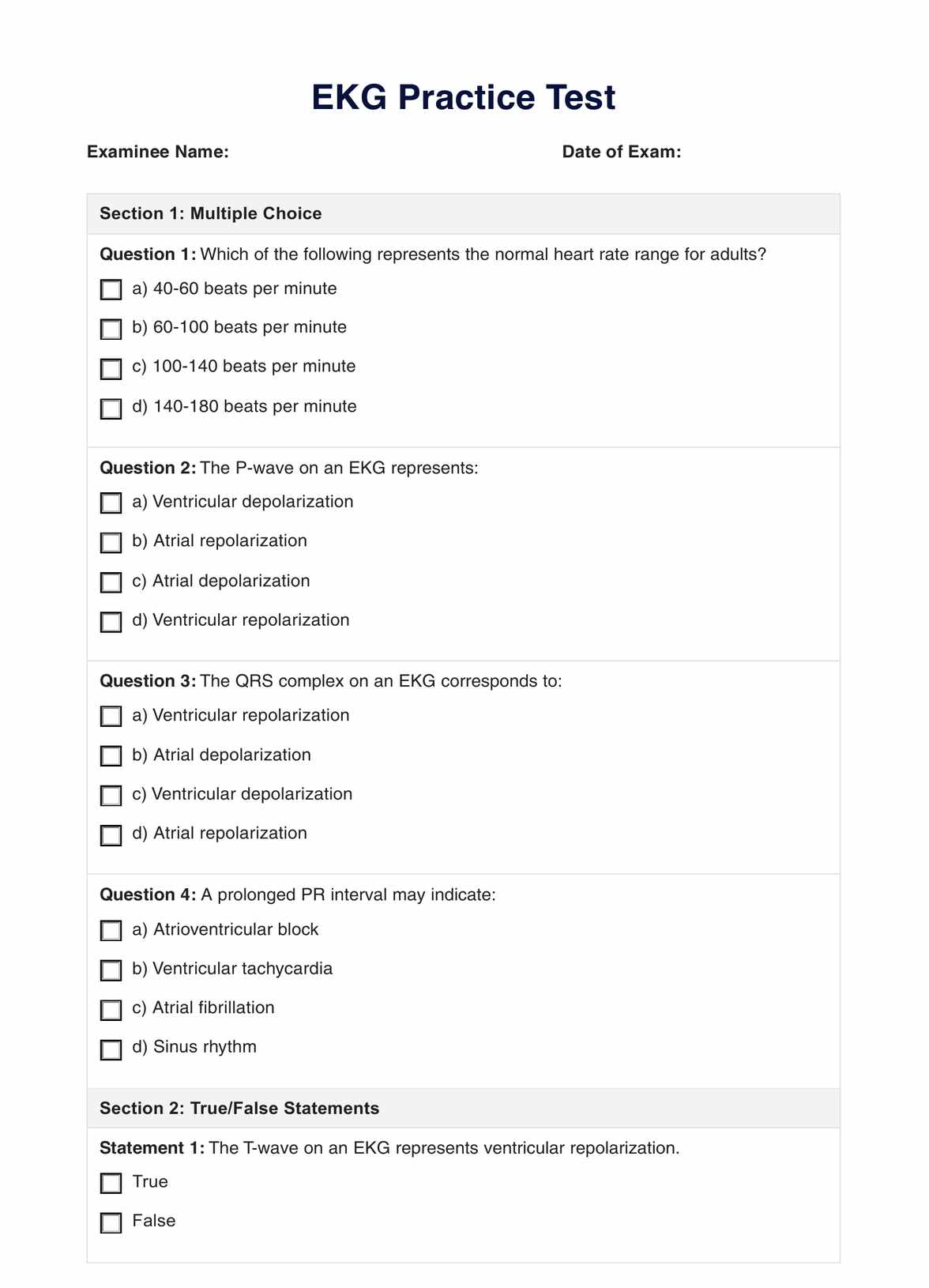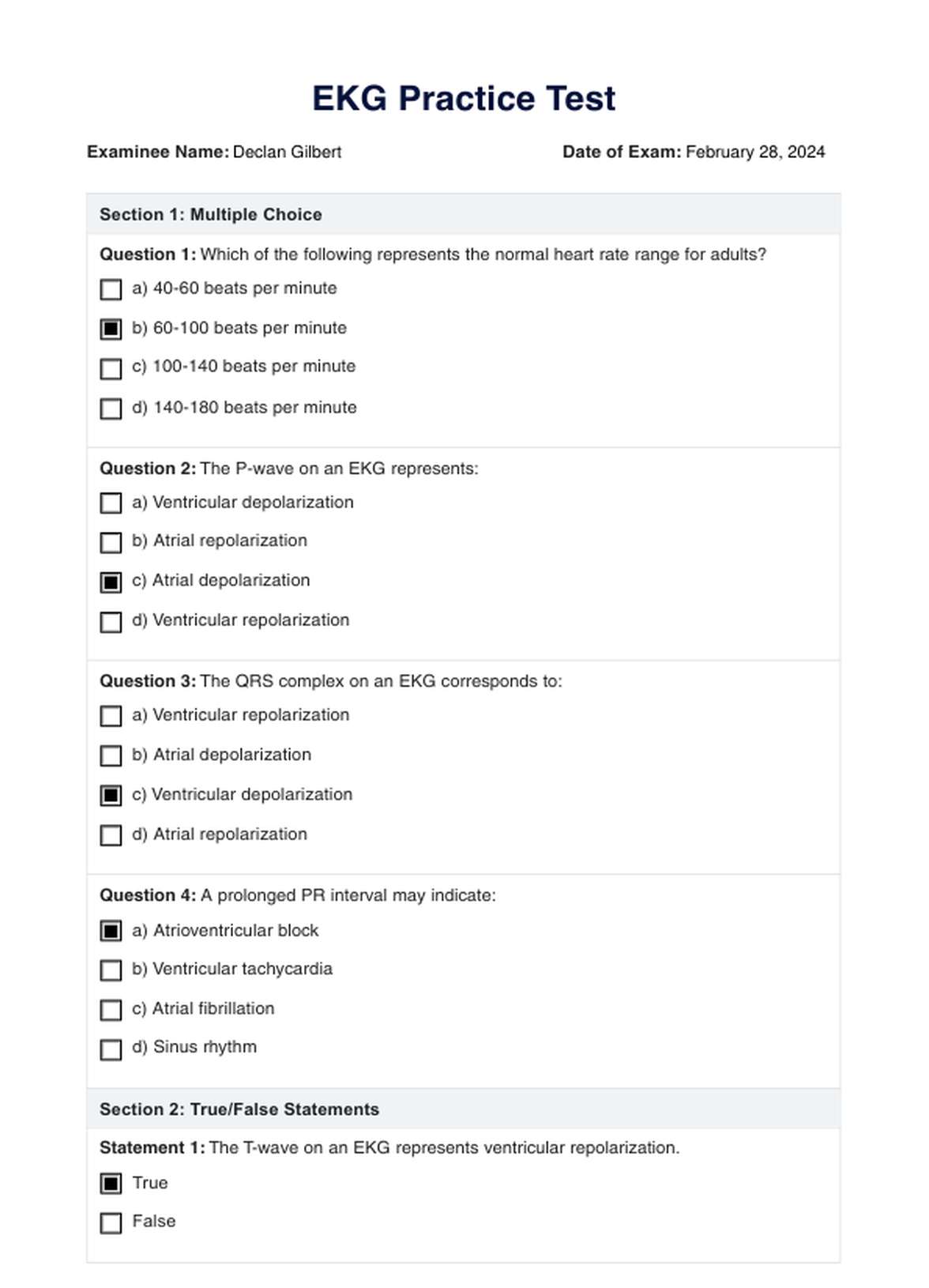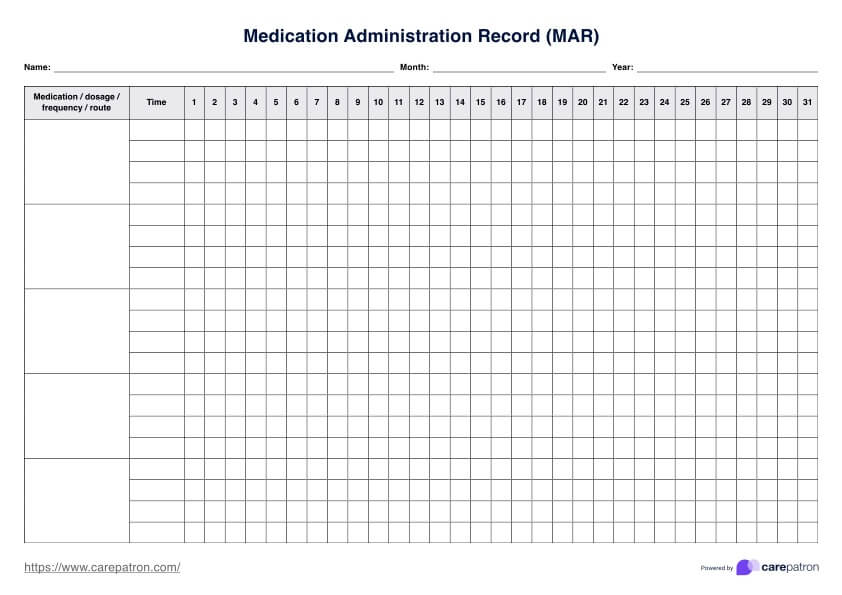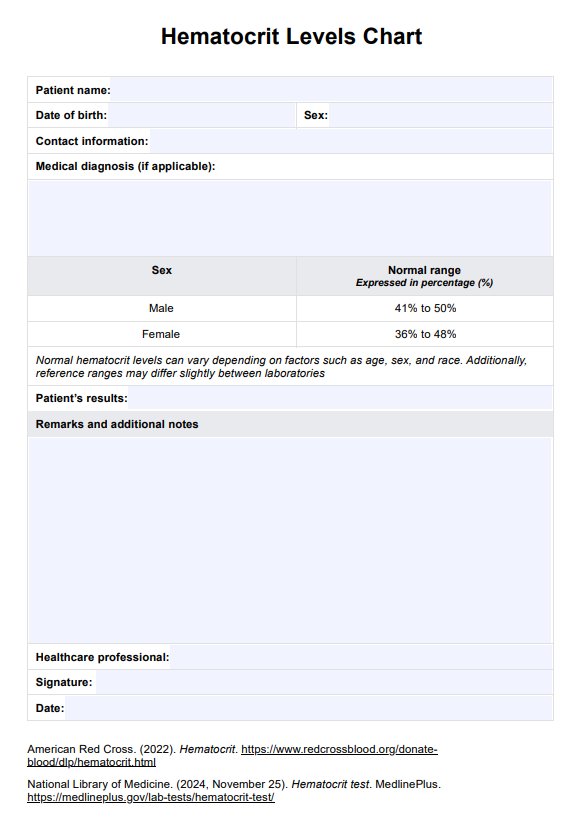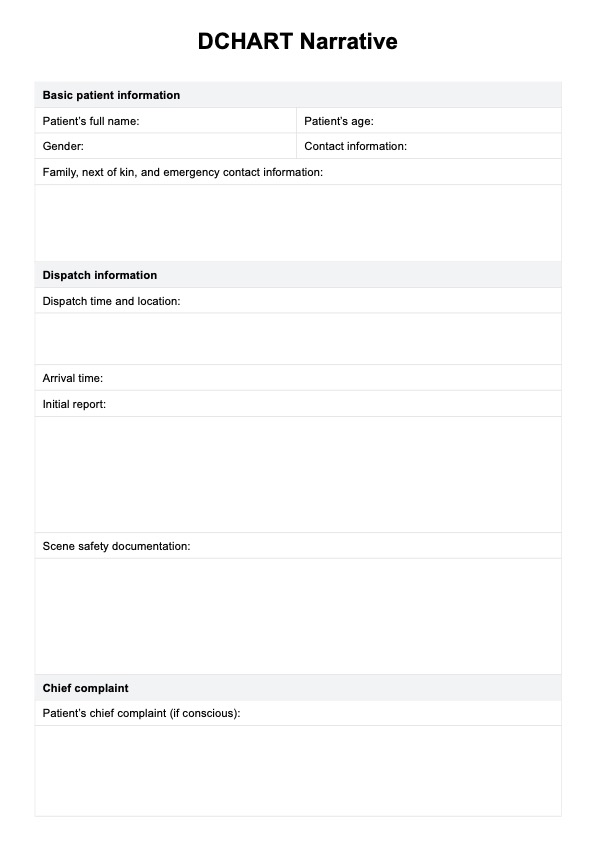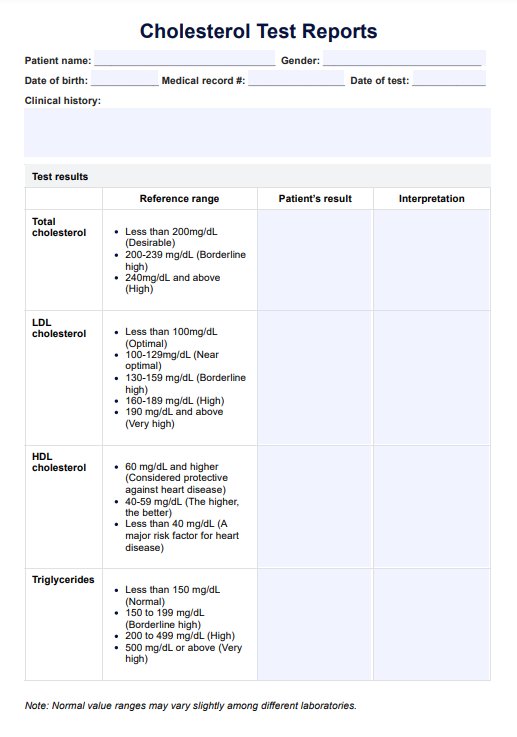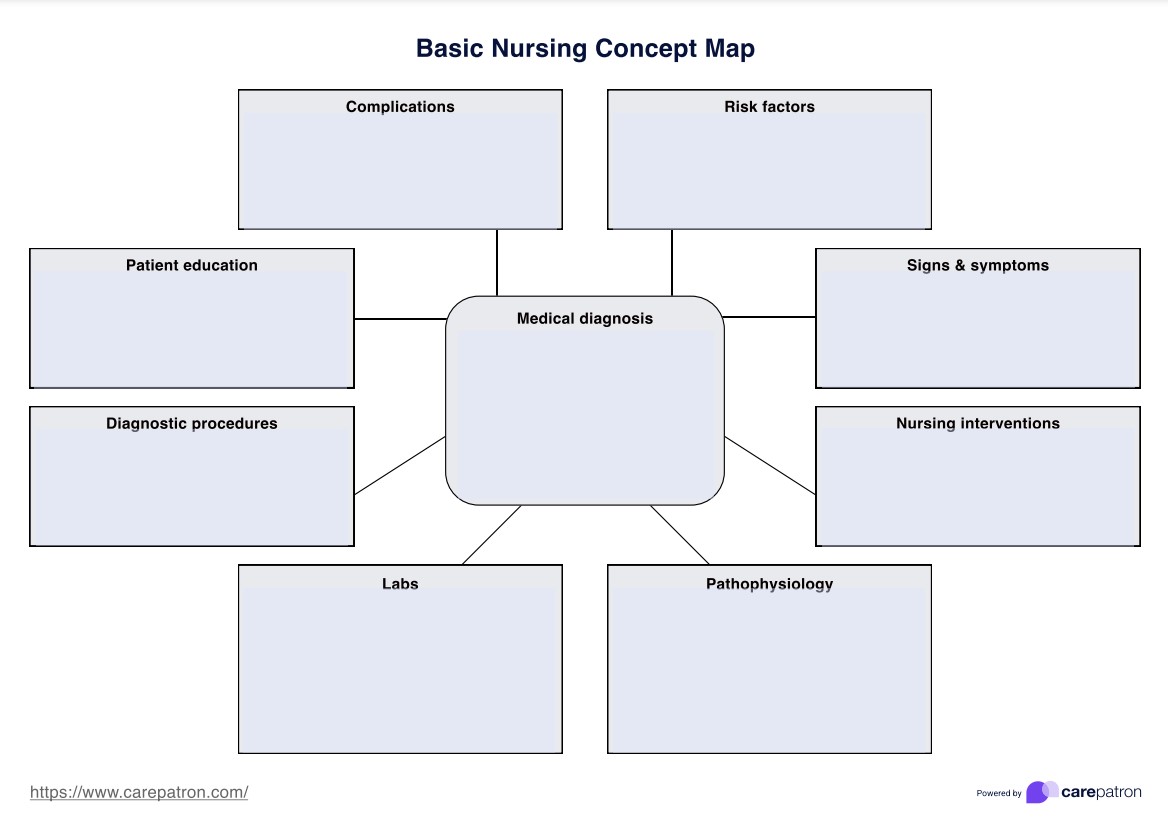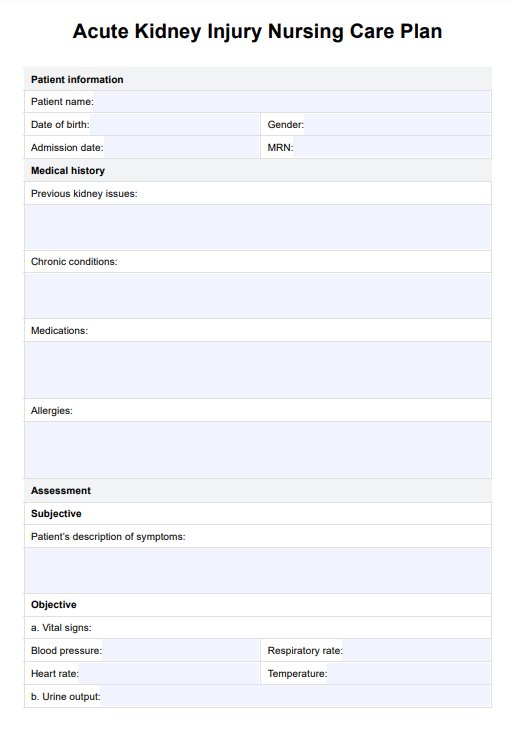EKG Practice Test
Looking to test your knowledge of EKG interpretation? Download Carepatron's free PDF of an EKG practice test to enhance your skills in electrocardiogram analysis.


What is an EKG?
An Electrocardiogram, commonly known as an EKG or electrocardiogram test, is a non-invasive medical test that records the electrical activity of the heart over a specific period. It provides valuable insights into the heart's rhythm and can help healthcare professionals identify various cardiac conditions. The test involves attaching electrodes to the skin, usually on the chest, arms, and legs. These electrodes detect the electrical signals generated by the heart and transmit them to the EKG machine for interpretation.
An Electrocardiogram, commonly known as EKG or ECG, is a non-invasive diagnostic test that records the electrical activity of the heart over a specific period. This test is crucial for assessing the heart's rhythm, identifying potential abnormalities, and helping healthcare professionals make informed decisions about a patient's cardiac health.
In essence, an EKG measures the electrical impulses the heart generates as it contracts and relaxes. These impulses are graphically represented on paper or displayed digitally, providing a visual representation of the heart's electrical patterns. Each spike and wave on the EKG tracing corresponds to a specific event in the cardiac cycle.
One f the primary components of an EKG is the PQRST complex, which stands for the following:
- P-wave: Represents the electrical activity associated with atrial depolarization, or the contraction of the atria.
- QRS complex: Reflects the electrical impulses related to ventricular depolarization, indicating the contraction of the ventricles.
- T-wave: Marks the electrical recovery or repolarization of the ventricles.
EKGs play a pivotal role in diagnosing and monitoring heart-related issues. By capturing the heart's electrical impulses, healthcare providers can assess the heart's overall health, identify irregularities, and formulate appropriate treatment plans. This test is commonly used to diagnose conditions such as arrhythmias, heart attacks, and heart diseases.
The importance of EKGs lies in their ability to provide valuable insights into the heart's electrical activity swiftly and accurately. This diagnostic tool aids in the early detection of heart-related issues, guiding healthcare providers in devising appropriate treatment plans. EKGs are routinely used in various medical settings, including hospitals, clinics, and ambulatory care, making them an integral part of cardiovascular healthcare.
EKG Practice Test Template
EKG Practice Test Example
What is an EKG Practice Test?
EKG practice tests serve as invaluable tools for healthcare professionals and students alike. They allow individuals to hone their skills in interpreting EKG readings, ensuring accurate and prompt identification of potential cardiac abnormalities.
Regular practice enhances proficiency and boosts confidence when faced with real-life situations. Moreover, EKG practice tests are essential for maintaining competence in the rapidly evolving cardiology field.
Within EKG practice tests, individuals encounter scenarios such as ventricular tachycardia, a rapid and potentially life-threatening rhythm originating in the heart's lower chambers. Recognition of ventricular tachycardia is crucial, as it requires prompt intervention to prevent adverse outcomes.
Additionally, EKG practice tests cover sinus bradycardia, a slower-than-normal heart rate, and first-degree heart block, which involves delayed electrical conduction through the heart's chambers. Familiarity with these rhythms is crucial for accurate diagnosis and appropriate patient management.
Understanding EKG practice strips
EKG practice strips are essential components of EKG practice tests, providing a hands-on and interactive approach to learning the art of electrocardiogram interpretation. These strips are essentially graphical representations of the heart's electrical activity over a specific time frame, allowing practitioners to analyze and identify various cardiac rhythms.
Creating effective EKG practice strips involves a thoughtful combination of real-world scenarios and theoretical constructs. The goal is to simulate various situations healthcare professionals may encounter in clinical settings. This includes normal and abnormal sinus rhythms such as third-degree heart block, sinus tachycardia, and other EKG patterns.
Practitioners should be exposed to diverse EKG rhythms, each presenting unique challenges and diagnostic considerations. Sample questions may include scenarios where participants must identify the ventricular rate, assess the overall EKG tracing, and determine the presence of abnormalities such as irregular intervals or prolonged QT segments.
Some sample items can include:
- Identify the EKG rhythm in the provided strip. Calculate the ventricular rate and determine whether it falls within the normal range. What considerations would you have for a patient presenting with sinus tachycardia?
- Analyze the EKG strip and identify the rhythm. Describe the relationship between atrial and ventricular contractions. What interventions or treatments would be appropriate for a patient with third-degree heart block?
- Examine the given EKG tracing. Confirm if it represents a normal sinus rhythm. What characteristics differentiate a normal sinus rhythm from other EKG patterns?
- Calculate the ventricular rate based on the EKG strip provided. Discuss the significance of the determined rate in the context of patient assessment and management.
How to use this template
By following these structured steps, practitioners can enhance their skills in identifying various cardiac rhythms, from normal sinus rhythm to more complex scenarios like ventricular tachycardia and atrial fibrillation.
Step 1: Familiarize yourself with the EKG strips
Begin by acquainting yourself with the EKG strips provided in the template. Identify the different rhythms, paying close attention to the characteristics of normal sinus rhythm, sinus bradycardia, and other variations. This foundational step lays the groundwork for accurate interpretation.
Step 2: Analyze ventricular tachycardia
Dive into the template's scenarios featuring ventricular tachycardia. Practice recognizing the rapid heart rate and irregular rhythm associated with this condition. Consider the potential clinical implications and understand how prompt identification is crucial for appropriate intervention.
Step 3: Explore ventricular fibrillation patterns
Move on to sections highlighting ventricular fibrillation. Grasp this rhythm's chaotic and erratic nature, recognizing its life-threatening potential. Delve into the template to understand the urgency in addressing ventricular fibrillation and its impact on overall cardiac function.
Step 4: Identify normal sinus rhythm features
Shift your focus to EKG strips depicting normal sinus rhythm. This step allows you to consolidate your understanding of the baseline cardiac rhythm, facilitating the comparison with abnormal patterns. Identify key features and variations within the normal sinus rhythm.
Step 5: Navigate through atrial fibrillation cases
Explore scenarios involving atrial fibrillation. Practice distinguishing the irregular and often rapid heartbeat characteristic of this arrhythmia. Consider the associated risks and possible interventions, preparing yourself for real-world applications.
Step 6: Recognize sinus bradycardia characteristics
Conclude your practice by examining EKG strips showcasing sinus bradycardia. Understand the slower-than-normal heart rate and associated symptoms. This step reinforces your ability to identify various cardiac rhythms, completing a well-rounded EKG interpretation practice.
Preparing for the EKG
Studying for EKG proficiency involves a strategic approach that combines theoretical knowledge with practical application. Individuals can maximize their understanding and interpretation skills by breaking down the process into specific steps, ensuring a comprehensive grasp of electrocardiogram complexities.
Step 1: Establish a Strong foundation
Start by building a solid foundation in cardiac anatomy and physiology. Understand the heart's electrical conduction system, which forms the basis for EKG interpretation. Resources such as textbooks, online courses, or educational videos can provide the necessary background.
Step 2: Master EKG fundamentals
Dive into the fundamentals of EKG interpretation. Familiarize yourself with the components of a standard EKG, including the PQRST complex—practice identifying normal sinus rhythms and deviations from the norm. Online platforms often offer interactive EKG tutorials and quizzes for reinforcement.
Step 3: Utilize EKG practice tests
Engage in regular EKG practice tests to apply theoretical knowledge in a practical context. Use dedicated EKG practice templates that cover a spectrum of cardiac rhythms, from common patterns to more complex scenarios like atrial fibrillation and ventricular tachycardia. This hands-on approach hones interpretation skills and boosts confidence.
Step 4: Seek interactive learning
Explore interactive learning tools, such as virtual EKG simulators or mobile applications, that provide a dynamic and engaging environment. These tools often allow users to practice real-time EKG interpretation, enhancing their ability to recognize patterns and make quick assessments.
Step 5: Join EKG study groups
Consider joining study groups or online forums dedicated to EKG interpretation. Collaborating with peers allows for exchanging insights, discussing challenging cases, and exposure to varied perspectives. This interactive learning environment fosters a deeper understanding of EKG complexities.
Step 6: Review and reflect
Regularly review your performance on EKG practice tests and assess areas for improvement. Reflect on challenging cases and seek additional resources to address specific weaknesses. This iterative process ensures continuous learning and refinement of EKG interpretation skills.
Commonly asked questions
To pass an EKG test, focus on mastering the fundamental rhythms, practice regularly with EKG strips, and utilize resources like EKG practice tests to reinforce your understanding. Familiarity with common cardiac patterns and systematic study will boost your confidence and performance.
The number of questions on an EKG test can vary. Typically, EKG exams range from 25 to 50 questions, with a mix of multiple-choice, interpretation of EKG strips, and scenario-based queries.
Knowing how to read an EKG is crucial for healthcare professionals as it provides insights into the heart's electrical activity. This skill aids in diagnosing various cardiac conditions, guiding appropriate treatment plans, and ensuring timely interventions for patient well-being.


